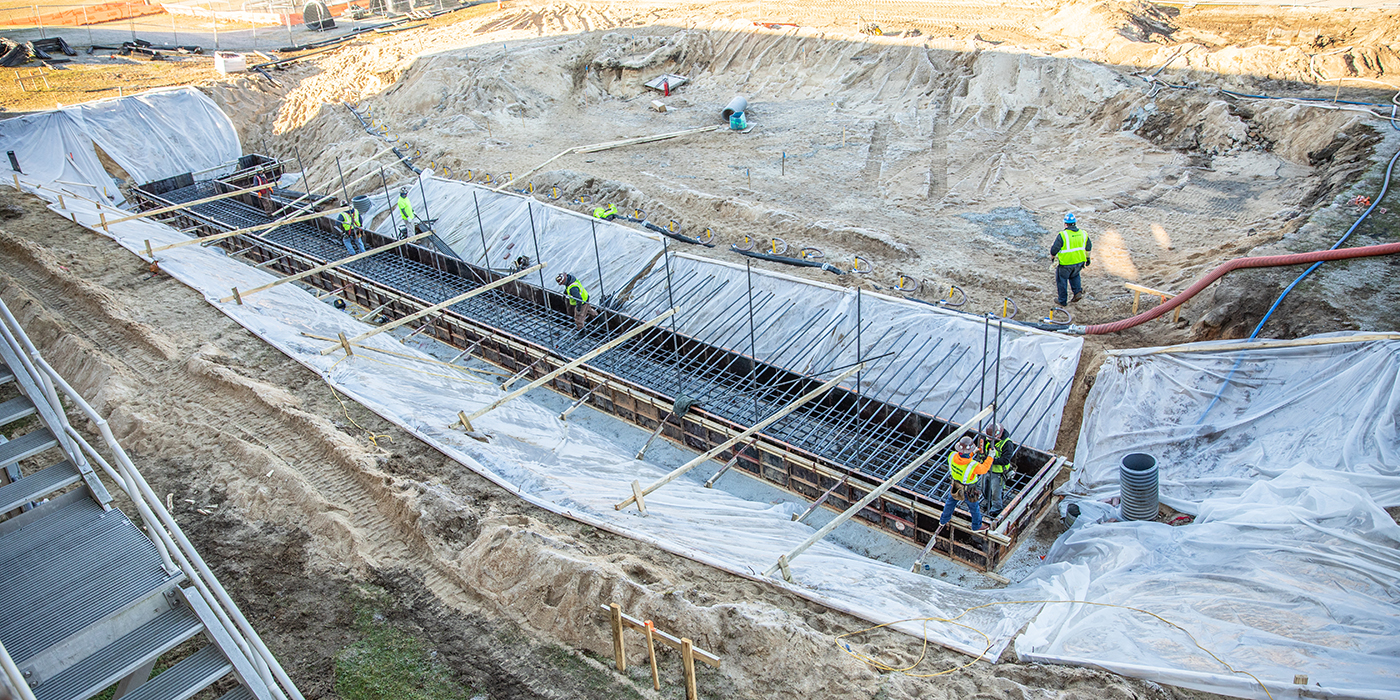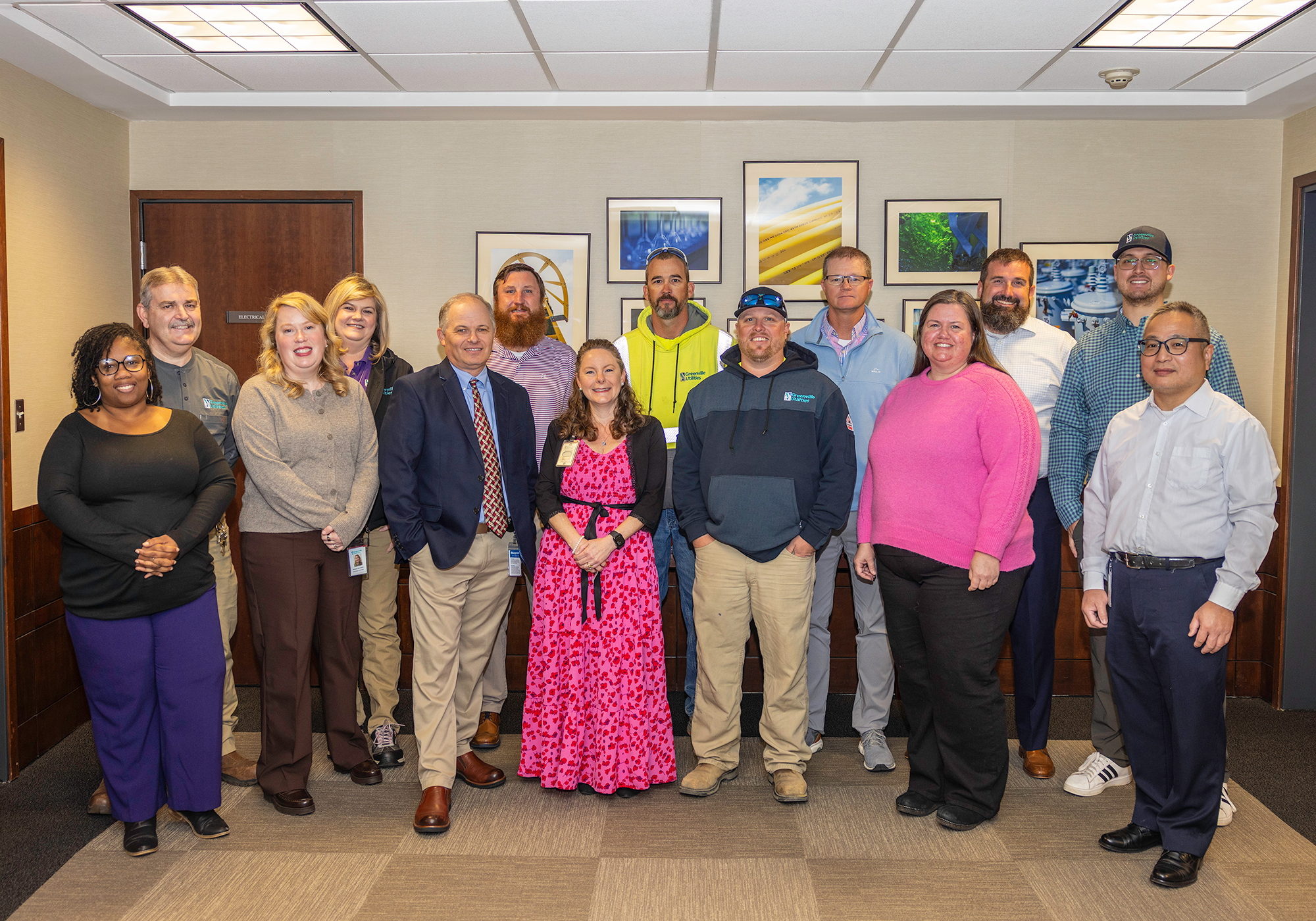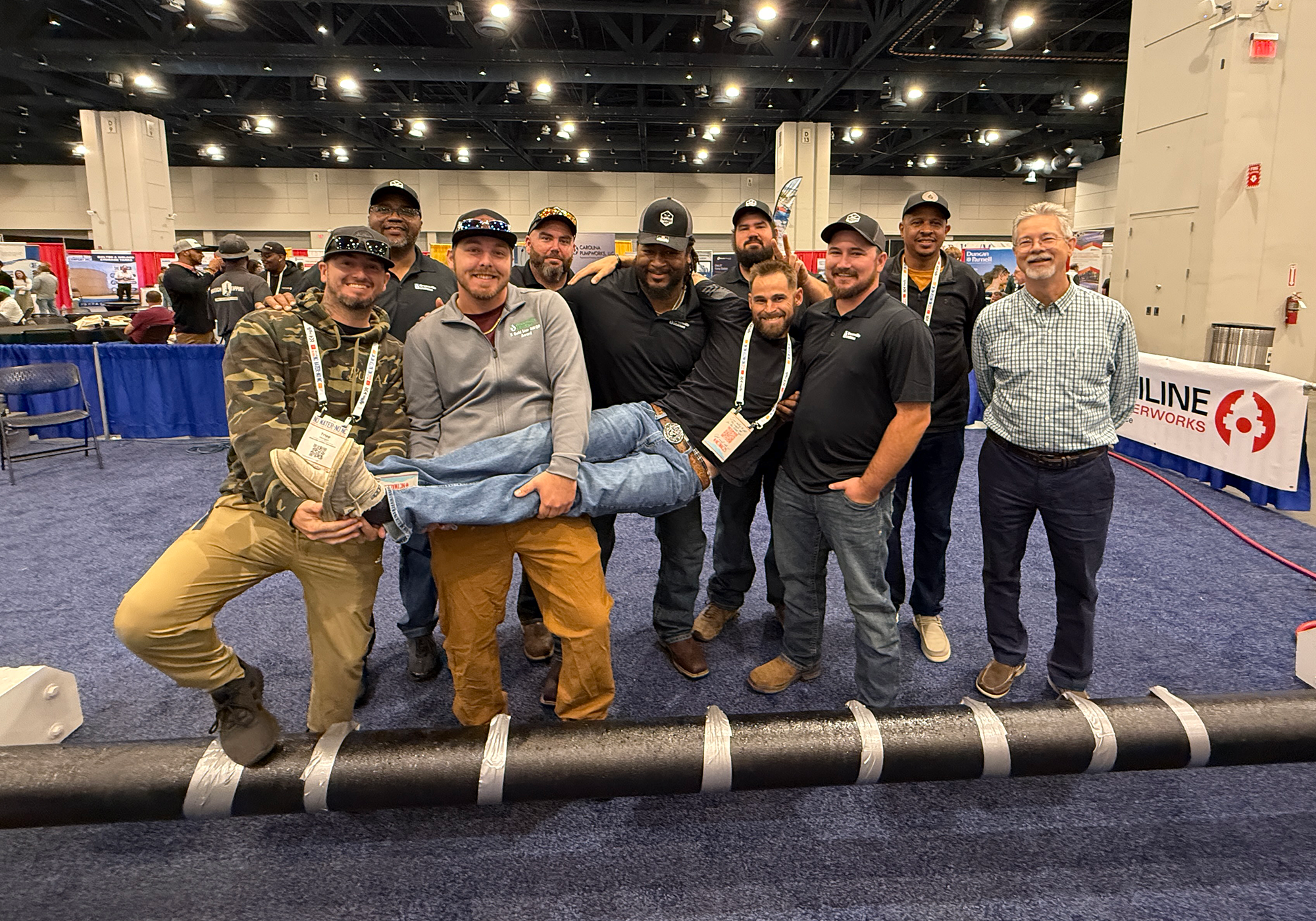
GUC’s existing Water Treatment Plant (WTP) was placed into service in 1983 with a capacity of 12 million gallons per day (mgd). An expansion to the plant was completed in 2002, resulting in the current “rated” treatment capacity of 22.5 mgd. Since the last expansion, our customer base and system demands have continued to increase. New water use records have been set including a current average day water demand of 14.0 mgd and a peak day record of nearly 18.6 million gallons in 2019, which represents use of approximately 80% of the WTP rated capacity.
In keeping an eye towards our region’s growth and to serve our customers more effectively and efficiently, construction to expand the Water Treatment Plant has begun. The project will add the capacity to treat another 10 million gallons of water per day, allowing us to meet future demands for years to come. The Construction Manager-At-Risk (CMAR) project is being performed by T.A. Loving Company and will take approximately 36 months to complete.
Superpulsator Construction
Two sections of expansion construction have begun. On one side of the main Plant building is construction for the new superpulsator clarifier. This newer technology combines rapid mix, flocculators, and sedimentation into a single tank, removing the need for additional sludge collection and removal facilities, which take up a lot of space.
The new system involves an upflow clarification process versus a gravity-fed process to remove solids from the water. With gravity-fed, heavy solids (called sludge or coagulated water) fall to the bottom of the tank, allowing clarified water to remain on top of the tank. With upflow clarification, after a chemical addition, the coagulated water enters the bottom of the tank. A blower creates a vacuum and causes the water to rise or fall (called pulse). During the pulse process, a sludge blanket is compressed while the clean water continues up to the collection laterals at the top of the tank. This process reduces the amount of solids entering the filters compared to conventional treatment.
Once the superpulsator construction is complete, the Plant will split the water clarification flow. The conventional gravity-fed side will continue handing the original 22.5 mgd, while the new superpulsator will handle the additional 10 mgd.
Chemical Storage Facility
On the opposite side of the Plant building is construction for an additional chemical storage facility. The new facility is located across from the original bulk storage facility, which will remain in place. Once construction is complete, they will move the aluminum sulfate and orthophosphate tanks to the new building and add additional sodium hydroxide and sodium hypochlorite tanks to the existing building.
“As our service area continues to grow, we need to ensure that our water treatment and storage capacity can meet that increased demand,” said WTP Superintendent Julius Patrick. “In October, we completed and put into service a third ground storage tank at the Plant, which was the first step to staying ahead of that growth. Construction of the superpulsator and additional chemical storage is the second step, followed by four additional filters and another clearwell pump station later in the project.”






